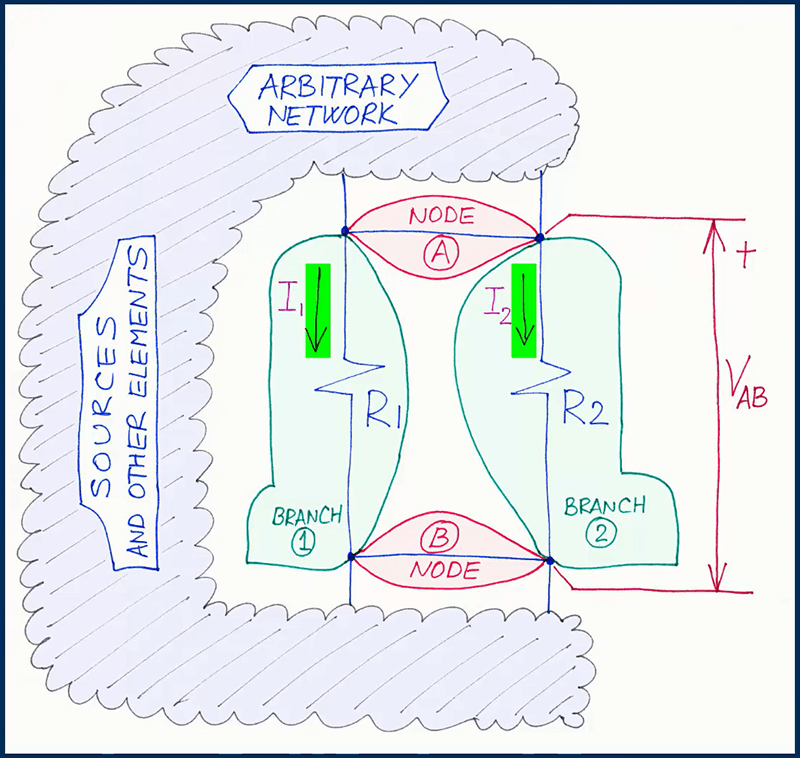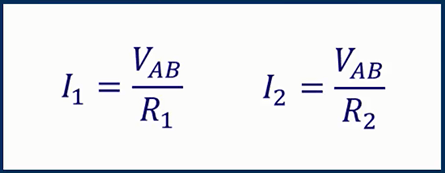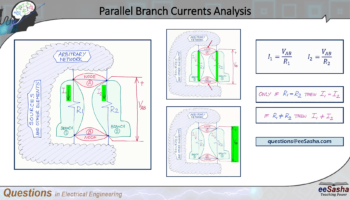In the article Electrical Formula for Calculating Resistance, we mentioned that elements that are connected in parallel always have the same voltage. This was an important observation. While it is clear that parallel elements or branches have the same voltage, what may not be as clear is: do the parallel branches also have the same currents?

One of my students needed this clarified, so he asked the following question:
I always welcome students’ questions. So my student basically asked: “What happens with parallel currents?” What he meant by “parallel currents” was currents that flow through branches that are parallel.

The short answer is: Parallel currents are not necessarily the same! They can be the same, but not necessarily. In order to better understand this answer, we need to do some circuit analysis.
It helps to clarify a few things first. When we talk about parallel currents, we talk about currents that flow through two different paths, and those paths happen to be parallel. In electrical circuits, when we have a couple of nodes, and we have a certain path between the two nodes, such a path is called a branch.
In the diagram to the right, we have two nodes that we designated as A and B. We can also state the definition of a node:
We have two (parallel) branches between nodes A and B. We can designate them as branch 1 and branch 2.

Let’s have a look at the diagram shown below. We have extracted two parallel branches out of an arbitrary, larger network of elements (that includes sources and other elements):

Within one branch, we have one current that flows through that branch. If we have two parallel paths, that means we have two parallel branches, and each branch will have its own current. We designated currents as I1 and I2.
Since we have two branches that are parallel, they must have the same voltage. In the diagram above, the voltage is designated as Vab. That is the voltage across each of the two branches.
In general, a branch can have many elements. And if so, those elements must be connected in series and share the same current. If we have more than one element in a branch, we can always replace those with an equivalent resistance. Ultimately, we will have just one resistance for every branch. Here we designated branch resistances as R1 and R2.

From Ohm’s Law, we know that the value of current depends on voltage and resistance. Current I1 is the current that flows through branch 1 and there we have resistance R1. Therefore current I1 is Vab/R1.
Similarly in the other branch we have resistance R2. So current I2 is Vab divided by R2.
Now if we compare what we calculated for I1 and I2, we can say that if R1=R2 then I1 is equal to I2 because Vab is the same voltage across both of the two branches.

On the other hand, if R1 is not the same as R2 that means the value for current I1 is different than value for current I2.

By doing this analysis, we can observe that two currents that flow through two parallel branches, or two parallel paths, can either be same or different. Which scenario will happen depends on corresponding branch resistances R1 and R2 – whether those are the same or different!
Ultimately, given the same voltage, it is the resistance of a branch that determines the amount of current that flows through the branch.
I hope this article helped clarify any uncertainties you may have had with currents that flow through parallel branches. If you have any other question that relates to Electricity or Electronics, Electrical Circuit Analysis or Power Systems, feel free to send me an email to:
As always, if you prefer watching videos, here is the “Parallel Branch Currents – Are They the Same?” video for you.
I am constantly developing new courses that go into much more depth in all of these topics. Thank you very much for stopping by and see you soon!
Below you can find all the slides I used to develop this blog post and the video:





